The China Syndrome
Battle swans are nothing new. Here we see a fine eighteenth century ceramic portrait of two innocent nudists (or perhaps not so innocent, who am I to say?) being harassed by a swan.

I should not have to say this, but let’s make it clear: even if a couple of hot nymphs get naked in the woods for a little sapphic nookie, there’s no excuse for avian rape.
Swans, can’t trust them anywhere.
So that was your introduction to the massive collection of ceramics at The Potteries Museum. We’re going to skip the fine art and the beautiful designs, and go for the ones I thought were funny or cool.
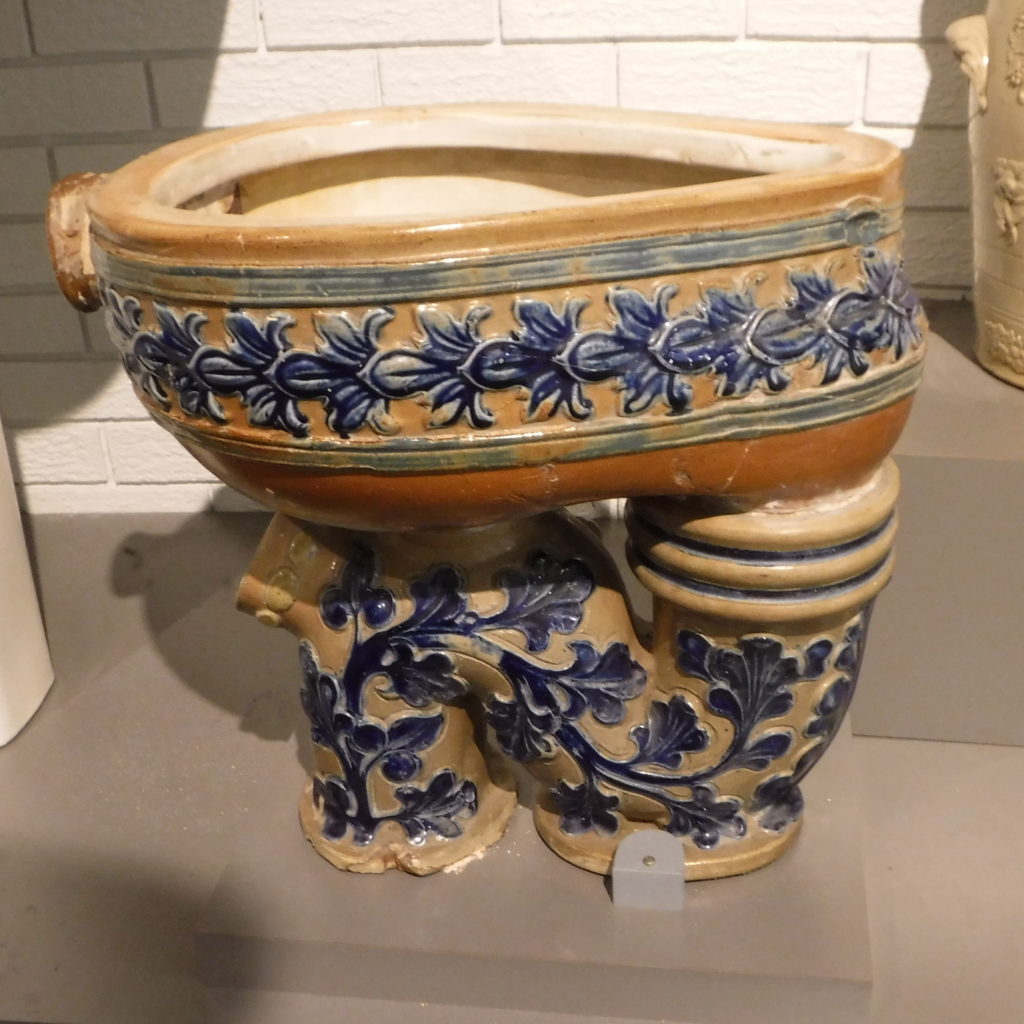
Yes, this is a toilet. Just the place to slowly go No.2. I hate to think what the matching bathtub looked like.

The caption claims that this is a tobacco pipe. Tobacco? Are you sure? It looks like an incentive to stop smoking. All the pipeweed would have burned before any smoke came out the other end.

Wedgwood hasn’t changed much in 200 years.
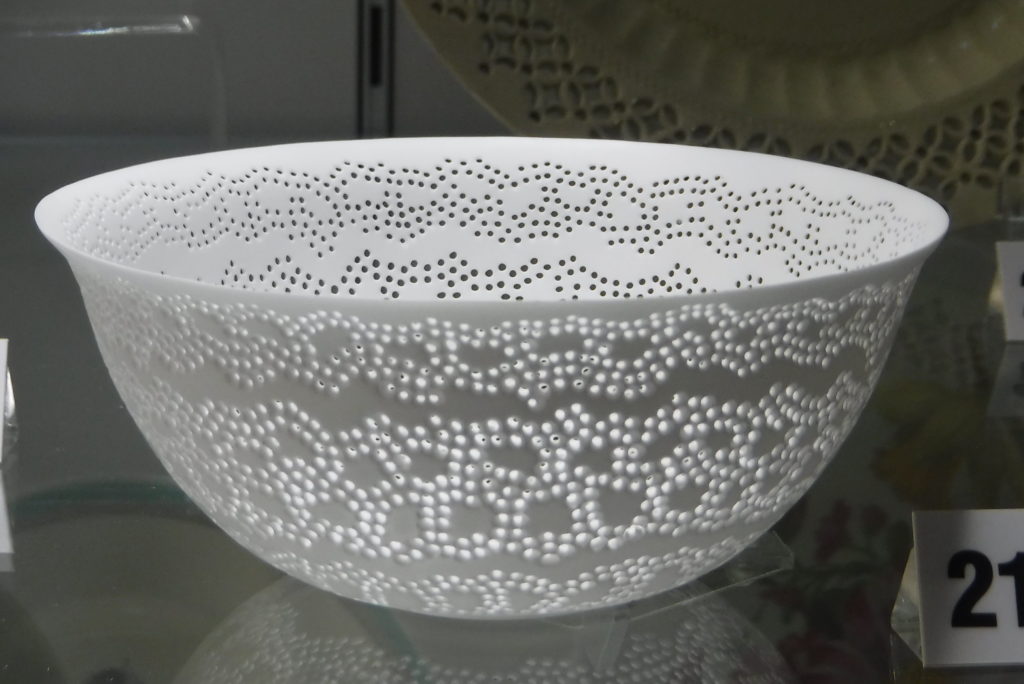
This little porcelain bowl (about the size of a hand) is a twentieth century piece. All the holes were made individually with a dentist’s drill.

Ceramic chocolate cake. That will go with my chocolate teapot.
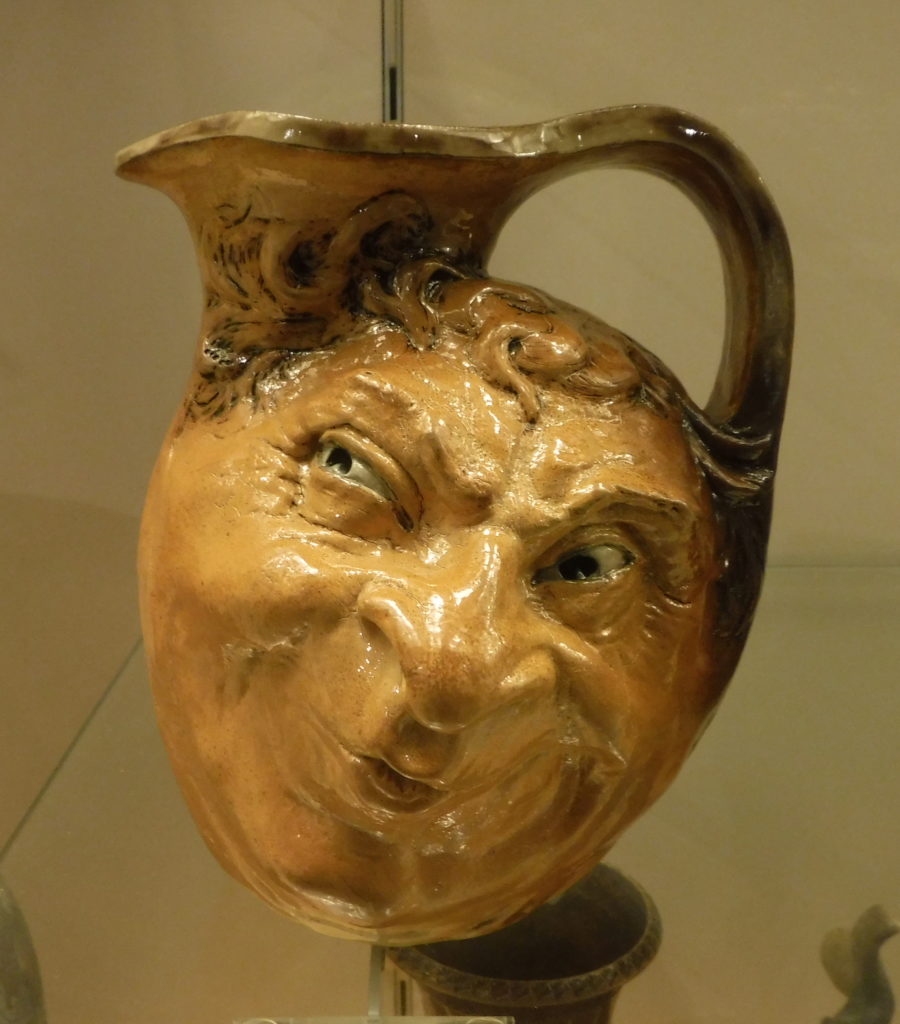
I’m not sure what goes in this jug, but probably something alcoholic.
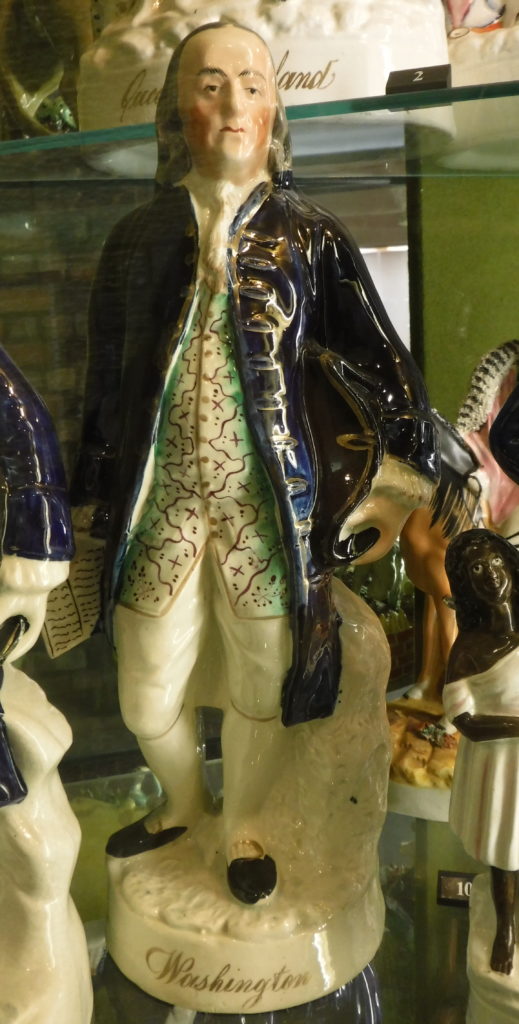
This mass produced figurine was originally a portrait of Ben Franklin. However, because nobody in the UK knew what George Washington looked like, it was also sold as George Washington, as you can see from this figure. Later in the 19th Century, when both these gentlemen were dead and America had become unfashionable in the UK, the figurine was sold as English Country Gentleman.
Fans of PG Wodehouse will probably remember several novels in which the possession of an antique cow creamer was a major plot point. The Potteries Museum has the largest collection of cow creamers of any museum, over six hundred of them.

They also have a huge collection mugs with frogs in them.
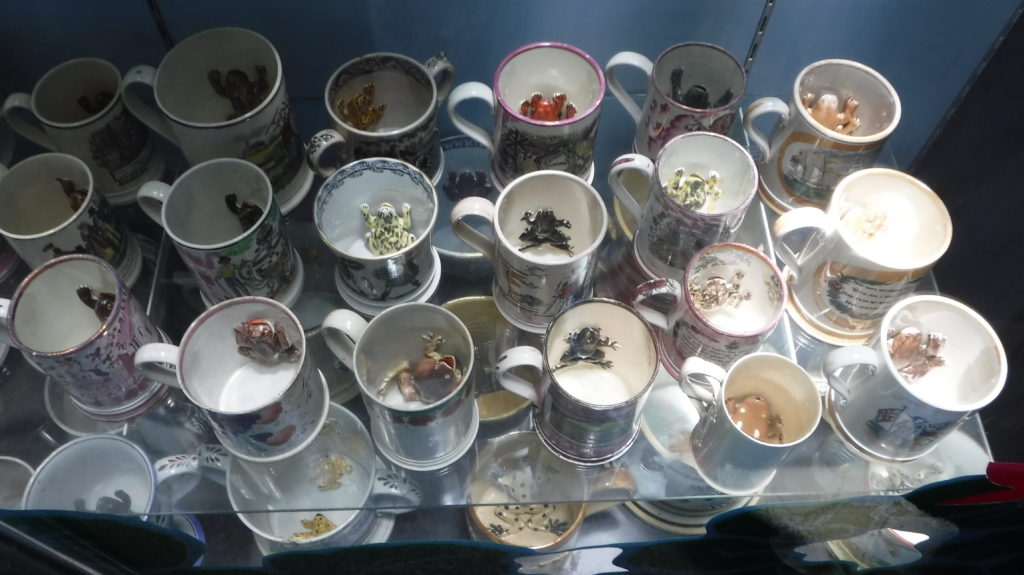
Thanks to the potter’s craft, when you drink enough to uncover the frog, it appears to be spitting the liquid into your mouth.
OK, now on to the serious stuff. Josiah Wedgwood’s factories did create beautiful pottery, but they also mass produced cheap pottery. Wedgwood was a pioneer in production line technology, a hundred and fifty years before Henry Ford. Making a plate was broken down into individual steps, and each step was done by a different person or group. For instance, a saggar maker will delegate the making of the bottoms of his saggars to a saggar maker’s bottom knocker. This was one of the places that the Industrial Revolution started.
Wedgwood was one of the members of the Lunar Society of Birmingham, a group of scientists and industrialists, who met once a month at the full moon when travel was safer. Other members included Matthew Bolton the silver manufacturer, Erasmus Darwin, and James Watt who revolutionized steam engine design. At one of their meetings, they had a guest speaker, a visiting electrician from America called Benjamin Franklin. I would love to have been a fly on the wall at that meeting. Wedgwood’s daughter married Erasmus Darwin’s son, and they had a boy called Charles, who staged his own revolution.
If you are wondering why the Industrial Revolution started on this rainy little island rather than, say, Italy or Spain or China or Germany or Russia, I think the answers are that it is a rainy little island, and it had ten pound notes.
I’ve already described how important the canals were to industrial development, but canals need a supply of water at the highest point of the canal, and that means you need regular rain. Also, being a small and densely populated island, the canals don’t have to go all that far to get from the factory to the sea port or the coal field.
As for ten pound notes, they were first issued in 1759 due to a gold shortage caused by the Seven Years War. This was followed by five pound notes in 1793 and one pound notes in 1797. The use of paper money meant that money in circulation could grow with the economy without the deflationary effects using a limited quantity of specie for money.
We left Stoke-on-Trent this afternoon and headed down half a dozen locks to moor across from the current Wedgwood factory.

What an ugly place to produce such beautiful china. But then the whole of The Potteries are like that.
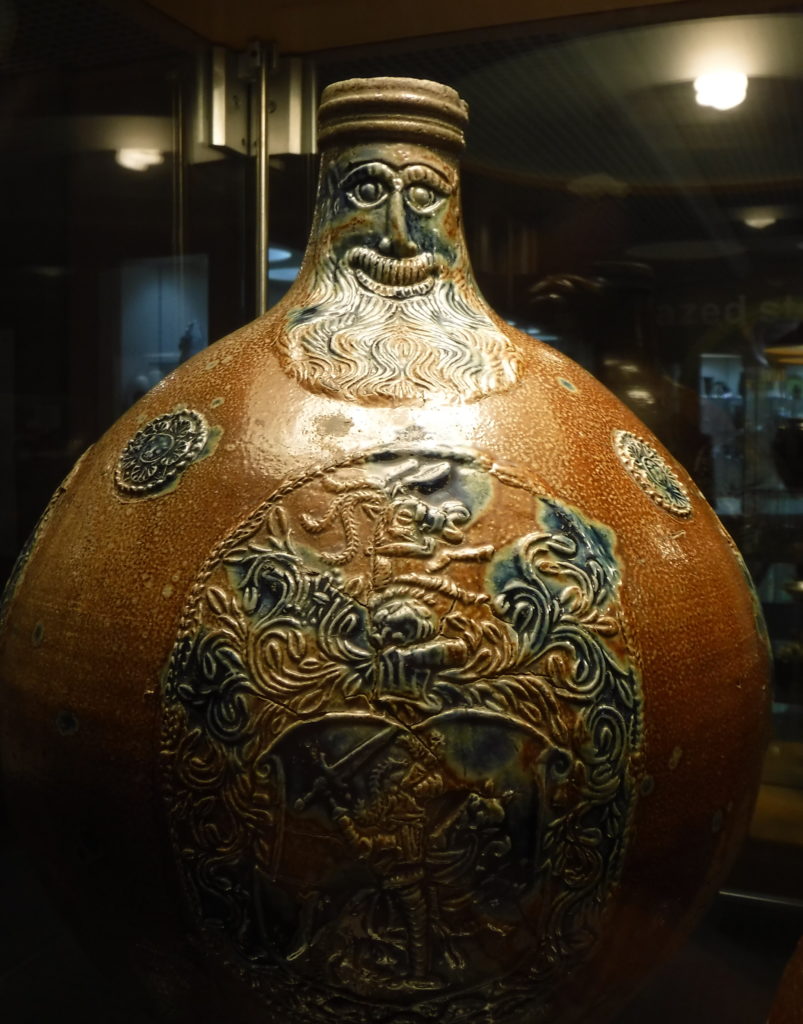
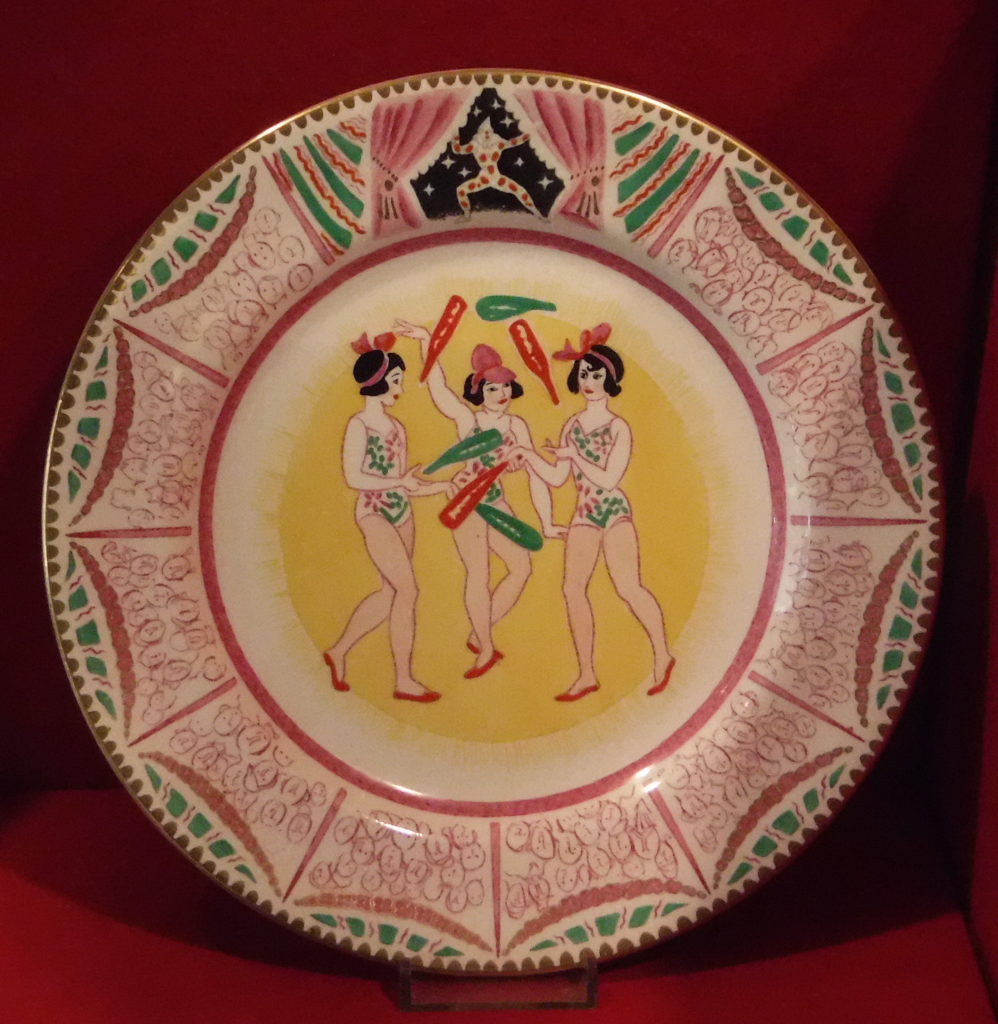
One thought on “The China Syndrome”
I could have sworn the cow creamer was silver…
Great photos!